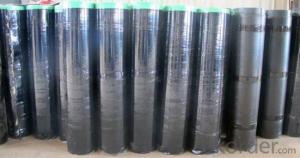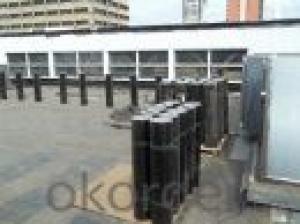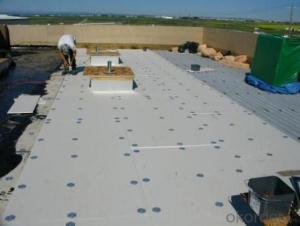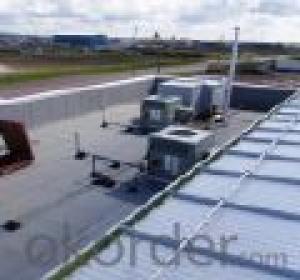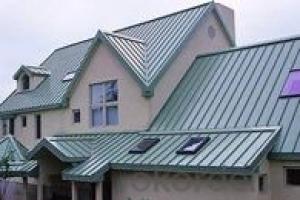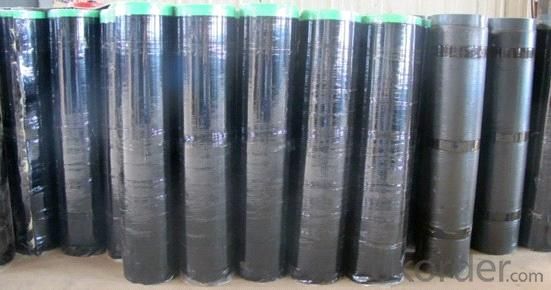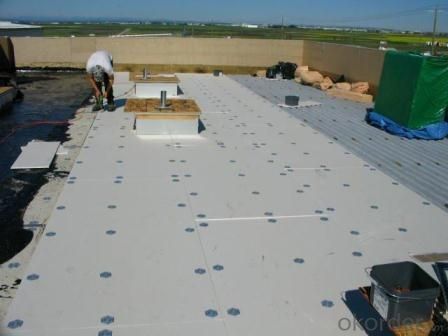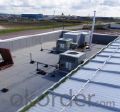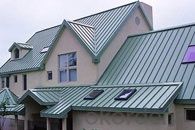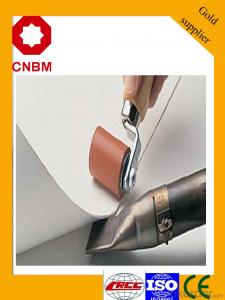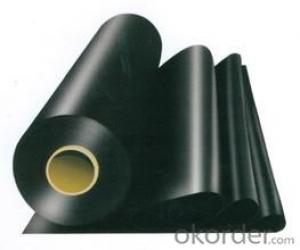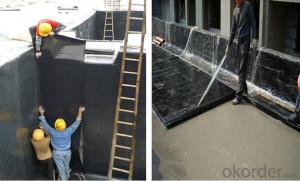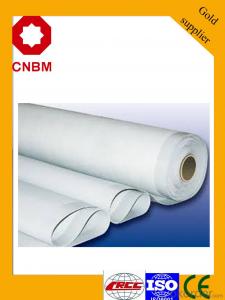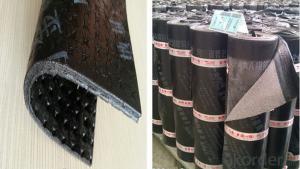APP/SBS Modified Bitumen Waterproof Membrane
- Loading Port:
- Shanghai
- Payment Terms:
- TT OR LC
- Min Order Qty:
- 1000 m²
- Supply Capability:
- 200000 m²/month
OKorder Service Pledge
OKorder Financial Service
You Might Also Like
Product description
SBS Waterproof Material Self Adhesive Aluminium Membrane is produced with SBS elastomer and bitumen as raw materials, using polyethylene film.
Aluminium foil coated on the upward or no file(both side self-adhesive) while self-adhesive protection layer on the downward
surface.It has a widely prospect new contruction waterproof materials. Good self-adhesion, no leaking,cold flexibility,especially
in self-adhesion. That is unque product in waterproof and application.
Packaging & Shipping
use advanced equipment to produce 2 meters WSBS Width Elastomeric Modified Bitumen Waterproofing Membrane which is made of bitumen modified with Styrene-Butadiene-Styrene (SBS) as dipping and painting. Its upper surface covers PE membrane and color sand or schist, and lower surface is made of isolation material. Products correspond to the national standards GB18242-2008(elastomeric modified bitumen waterproofing membrane).
Package and transportation-- SBS waterproof membrane / APP waterproof membrane / Asphalt waterproof membrane for building waterproofing construction :
1. Torch on bitumen membrane sheets 4mm should be stored under dry and ventilated conditions.
2. Different types of membranes must be piled separately.
3. Under usual condition, storage period is one year since production date.
4. Membrane roll should be put vertically during transportation. It should be kept away from sunshine and rainwater.
.
Advantagee
1.1m or 2m width, we can produce as your requirment
2.Simple and Efficient Construct, Greatly Saving Construct Period
3.Advanced Production Line
4.Excellent Comprehensive Physical Properties
5.Stable Dimension
6.Wide Adaptability of Facing Material
7. Cold-applied construction with no open flame and self-adhesion without bonding agent make it safe, low- carbon, environmental, and economical.
8. Excellent adhesive performance guarantees the integrity of waterproof layer.
9. Good rubber elasticity, elongation and shear stress.
10. Good low-temperature property.
Application method
1) Widely used in the industrial and civil building roofing, underground, pool, tunnel, wooden and metal roofing.
2) Specially applied in the oil depot chemical factory, garment factory, and granary.
3) Especially used in cold places.
4) Tape used for sealing all construction material surfaces.
Our Services
1.If you need some advises for the waterproof construction, we have the best engineer to serve you.
2.We send the free samples to you by freight collect.
3.We will guarantee the quality and the competitive price.
4.We will give you the best packaging and safe shipping.
5.If any problem, we will always be right here waiting for you.
Storage:
Different types or specifications of products should be separated, not mixed.
Keep it dry and ventilated, protected from the sun or rain.
Storage temperature should never be higher than 45 °C. Pile up the membranes flatwise whose stockpile height never exceeds five layers. One layer is guaranteed if it is placed vertically.
Prevent it from inclination or In the process of transportation, it should be lying in case of inclination or lateral pressure. If necessary, cover it with felt-cloth.
Storage time is at least one year from manufacture date on if the product is under normal operation of storage.
Technical Parameters
Item | Index | ||||||
1 | Thickness of resin layer of the middle fabric ,mm≥ | - | - | 0.40 | 0.40 | 0.40 | |
2 | Tensile performance | Max tensile strength,N/cm ≥ | - | 120 | 250 | - | 120 |
Tensile strength,NPa ≥ | 10 | - | -10 | - | - | ||
Max elongation% ≥ | - | - | 15 | - | - | ||
Breaking elongation % ≥ | 200 | 150 | - | 200 | 100 | ||
3 | Heat treatment size change rate%≤ | 2.0 | 1.0 | 0.5 | 0.1 | 0.1 | |
4 | Cold bonding | -25°c No cracks | |||||
5 | Watertightness | 0.3mPa,2h waterproof | |||||
product show
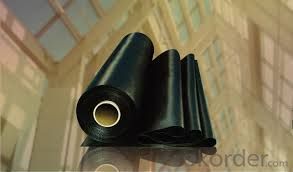
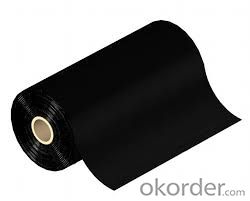
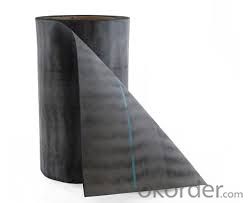
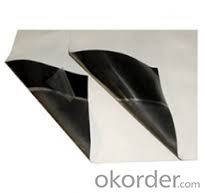
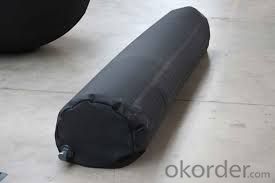
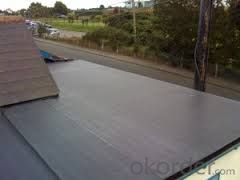
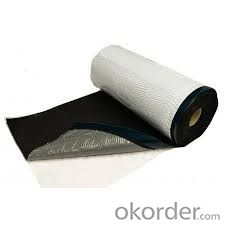

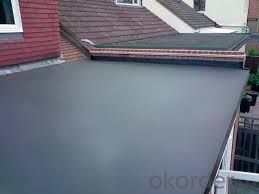
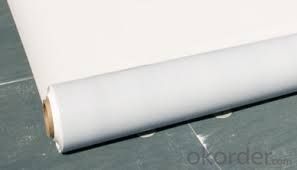
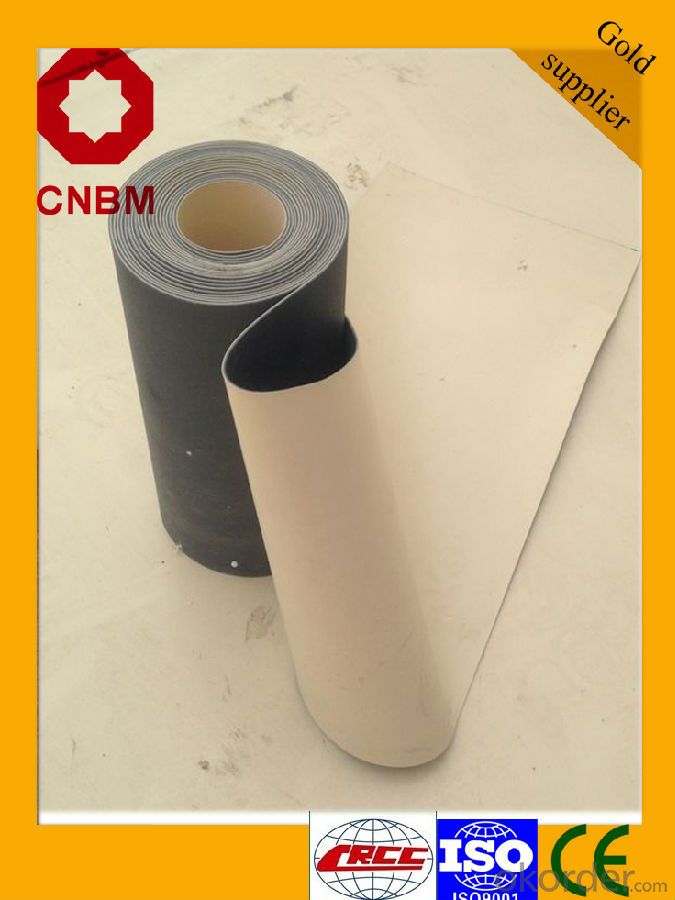
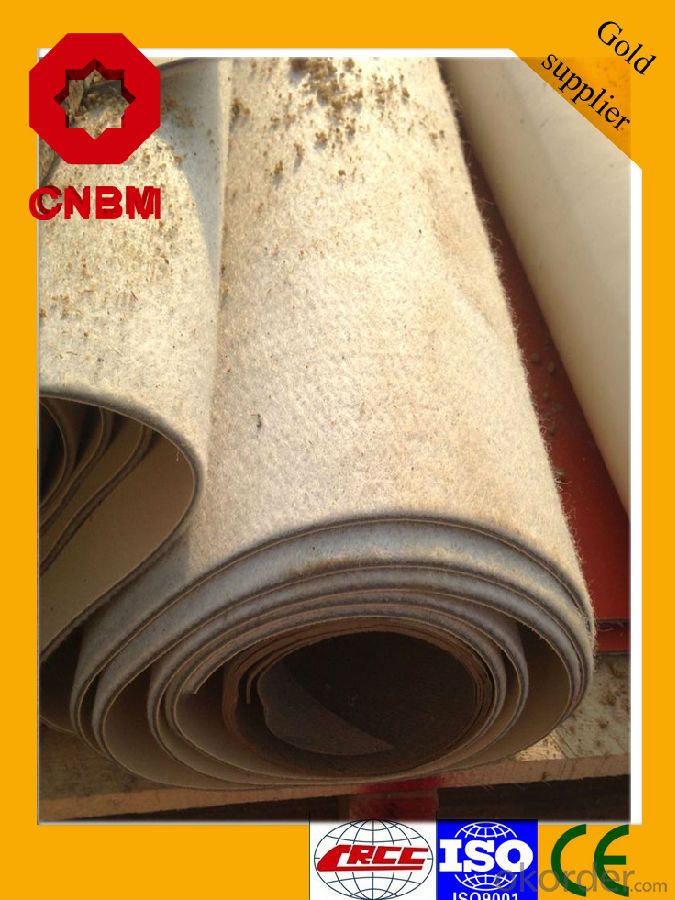

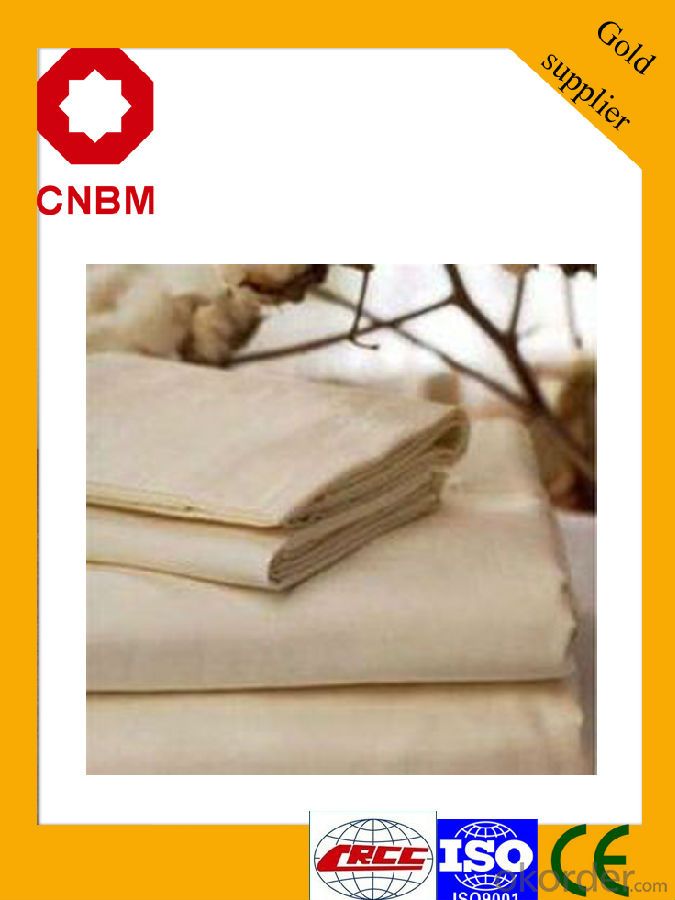
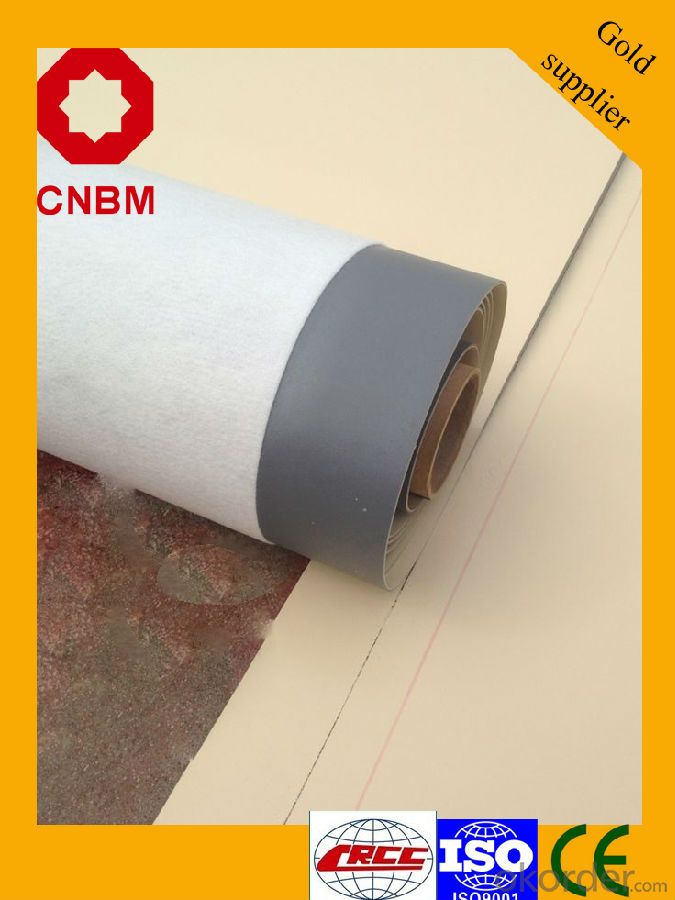
FAQ
Q: What's the de6abf1fe186f8d58506cbcfe46eed814d.jpglivery time ?
A: 3-5 days for 1-600 rolls, 10-15 days for container.
Q: What's the payment terms ?
A: TT/LC
Q: How do you make replacement with quality problems ?
A: New replacement will be packed into your next order or send to you directly after receive video or photo about quality problems.
- Q: Is a waterproofing membrane resistant to cracking or shrinking?
- Typically, a waterproofing membrane resists cracking and shrinking. Its purpose lies in creating a barrier that prevents water from penetrating surfaces like roofs, walls, or foundations. To accomplish this, these membranes are typically constructed from flexible and durable materials, such as modified bitumen, PVC, EPDM, or polyurethane. These materials possess inherent properties that enable them to withstand different environmental conditions, including temperature fluctuations, UV radiation, and physical stresses. This resilience guarantees that the waterproofing membrane remains intact and stable, even when exposed to challenging circumstances. Furthermore, waterproofing membranes are engineered to be highly resistant against cracking and shrinking. They are designed to accommodate movements and structural changes that may arise in the building or substrate over time. This flexibility helps prevent the membrane from cracking or tearing, even in the presence of minor shifts or settling in the structure. Additionally, waterproofing membranes undergo rigorous testing and quality control measures during their manufacturing process. These tests replicate real-world conditions, including temperature changes, elongation, and compression, to verify the membrane's performance and durability. Nevertheless, it is vital to note that the quality and performance of a waterproofing membrane can vary depending on the specific product and manufacturer. Selecting a reliable and reputable brand, as well as ensuring proper installation and maintenance, is crucial to maximize the membrane's resistance to cracking or shrinking.
- Q: Can a waterproofing membrane be used on tunnels with subway systems?
- Yes, a waterproofing membrane can be used on tunnels with subway systems. In fact, it is highly recommended to install a waterproofing membrane in subway tunnels to prevent water infiltration and potential damage to the structure and electrical systems. The waterproofing membrane acts as a barrier to keep water out and protect the tunnel from moisture-related issues such as corrosion, mold, and deterioration. It is important to choose a waterproofing membrane that is specifically designed for tunnel applications and can withstand the unique conditions and challenges of subway systems, such as high traffic loads, vibrations, and exposure to chemicals. Additionally, the installation of the waterproofing membrane should be done by experienced professionals following the appropriate guidelines and specifications to ensure its effectiveness and longevity.
- Q: Can waterproofing membranes be used on metal surfaces?
- Yes, waterproofing membranes can be used on metal surfaces. These membranes are designed to create a barrier against water penetration, and they can adhere to a variety of materials including metal. Applying a waterproofing membrane on metal surfaces can help prevent corrosion and protect the metal from damage caused by moisture or water exposure.
- Q: Can a waterproofing membrane be used for a warehouse floor?
- No, a waterproofing membrane is not typically used for a warehouse floor. Instead, materials such as epoxy or concrete sealers are commonly used for warehouse floors to provide durability and resistance to heavy loads and foot traffic.
- Q: How does a waterproofing membrane handle water infiltration from below?
- A waterproofing membrane is specifically designed to handle water infiltration from below by creating a barrier that prevents moisture from seeping through. These membranes are typically made from materials such as rubber, PVC, or modified bitumen, which are inherently resistant to water penetration. When installed correctly, a waterproofing membrane is applied to the surface of a structure's foundation or basement walls, creating a continuous and impermeable layer. This membrane acts as a protective shield, preventing water from entering the structure through the foundation walls or basement floor. The membrane is typically installed in multiple layers, ensuring maximum protection against water infiltration. The layers are often overlapped and sealed together to create a seamless and watertight barrier. Additionally, the membrane may be reinforced with fabric or mesh to provide added strength and durability. In cases where there is a high water table or excessive hydrostatic pressure from the surrounding soil, the waterproofing membrane may be combined with a drainage system. This system helps to divert water away from the structure, relieving pressure and reducing the risk of water infiltration. Overall, a waterproofing membrane effectively handles water infiltration from below by creating a durable and impermeable barrier that prevents moisture from entering the structure. By installing a properly designed and installed waterproofing system, property owners can ensure long-term protection against water damage and structural deterioration.
- Q: Can a waterproofing membrane be used in laundry rooms?
- Yes, a waterproofing membrane can be used in laundry rooms. Laundry rooms are areas where water and moisture are commonly present due to washing machines, sinks, and other water-related activities. Installing a waterproofing membrane in the laundry room can help prevent water damage to the walls, floors, and other structural components. It acts as a barrier against water penetration, ensuring that any water or moisture that accumulates in the room does not seep into the underlying surfaces. This can be particularly beneficial in laundry rooms located on upper floors or in areas prone to high humidity or flooding. By using a waterproofing membrane, homeowners can protect their laundry rooms from potential water-related issues, such as mold growth, rotting, or structural damage.
- Q: How is a waterproofing membrane installed?
- To achieve proper installation and effective waterproofing, the installation process of a waterproofing membrane usually follows a step-by-step approach. Here is a general outline of how the installation takes place: 1. Surface Preparation: The initial step involves preparing the surface where the membrane will be installed. This necessitates a thorough cleaning of the surface, eliminating any dirt, debris, or loose materials. The objective is to create a clean and smooth surface to ensure optimal adhesion of the membrane. 2. Priming: Subsequently, a primer is applied to the surface to enhance the adhesion between the membrane and the substrate. It also provides a uniform surface for the membrane to adhere to. 3. Membrane Application: The next step involves applying the waterproofing membrane onto the prepared surface. There are various types of membranes available, such as sheet membranes or liquid-applied membranes. Sheet membranes are typically rolled out onto the surface and adhered using a suitable adhesive or self-adhesive backing. Liquid-applied membranes are spread or sprayed onto the surface in multiple coats, allowing each coat to cure before applying the next one. 4. Seam and Joint Treatment: In areas where multiple sheets or sections of the membrane intersect, special attention is given to treating the seams and joints to ensure a watertight seal. This may entail overlapping the sheets and applying a seam tape or using a liquid-applied sealant to fill any gaps or joints. 5. Protection and Drainage: Once the membrane is installed, it is crucial to safeguard it from damage and facilitate proper drainage. This can be achieved by installing a protective layer, such as a geotextile fabric or a drainage board, over the membrane. These layers serve to prevent punctures or abrasions and allow any water that penetrates the surface to drain away effectively. 6. Quality Control: After the completion of the installation, it is essential to conduct quality control checks to ensure the correct installation of the membrane. This may involve visual inspections, water tests, or the utilization of specialized equipment to test the integrity of the membrane. It should be noted that the specific installation process may vary depending on the type of waterproofing membrane employed and the requirements of the project. It is advisable to adhere to the manufacturer's guidelines and consult with a professional waterproofing contractor for accurate installation instructions.
- Q: Are there any specific considerations for installing a waterproofing membrane on precast concrete surfaces?
- Yes, there are specific considerations for installing a waterproofing membrane on precast concrete surfaces. Firstly, the surface must be thoroughly cleaned and free from any dirt, debris, or loose particles. It is also important to ensure that the precast concrete surface is dry before applying the membrane. Additionally, the type of waterproofing membrane used should be compatible with the precast concrete material to ensure proper adhesion. Proper surface preparation, material compatibility, and ensuring a dry surface are key factors to consider when installing a waterproofing membrane on precast concrete surfaces.
- Q: What is rigid waterproof, flexible waterproof?
- 2, flexible waterproofing refers to the waterproof layer in the external force, the waterproof material itself has a certain degree of stretch ductility (such as rubber-like flexibility), to resist the elastic layer of elasticity within the grassroots cracking, showing a certain degree of flexibility. Such as rubber-like membrane waterproof, polyurethane coating waterproof.
- Q: Can a waterproofing membrane be used for a stadium roof structure?
- A stadium roof structure can utilize a waterproofing membrane to prevent water damage. This type of membrane acts as a protective layer that stops water from infiltrating the roof. It is typically constructed from water-resistant materials like rubber or synthetic polymers. For stadiums with open-air or retractable roofs, it is crucial to employ a waterproofing membrane to maintain a watertight environment and prevent leaks or water-related issues. This is especially significant because these types of stadiums are exposed to the elements and more vulnerable to water infiltration. A waterproofing membrane can be applied to different types of stadium roof structures, including metal, concrete, or fabric roofs. It is typically installed beneath the roofing material, serving as a protective barrier against water. By preventing water from seeping into the roof, the membrane helps to extend the roof's lifespan and safeguard the stadium's interior from water damage. Furthermore, a waterproofing membrane can offer additional benefits to a stadium roof structure. It can enhance energy efficiency by minimizing heat loss or gain through the roof. Some membranes also provide UV resistance, protecting the roof from harmful ultraviolet rays. In summary, implementing a waterproofing membrane in a stadium roof structure is a practical and efficient solution to ensure the roof remains watertight, durable, and safeguarded from water damage.
Send your message to us
APP/SBS Modified Bitumen Waterproof Membrane
- Loading Port:
- Shanghai
- Payment Terms:
- TT OR LC
- Min Order Qty:
- 1000 m²
- Supply Capability:
- 200000 m²/month
OKorder Service Pledge
OKorder Financial Service
Similar products
Hot products
Hot Searches
Related keywords
